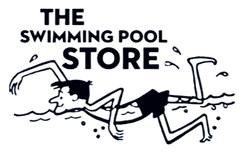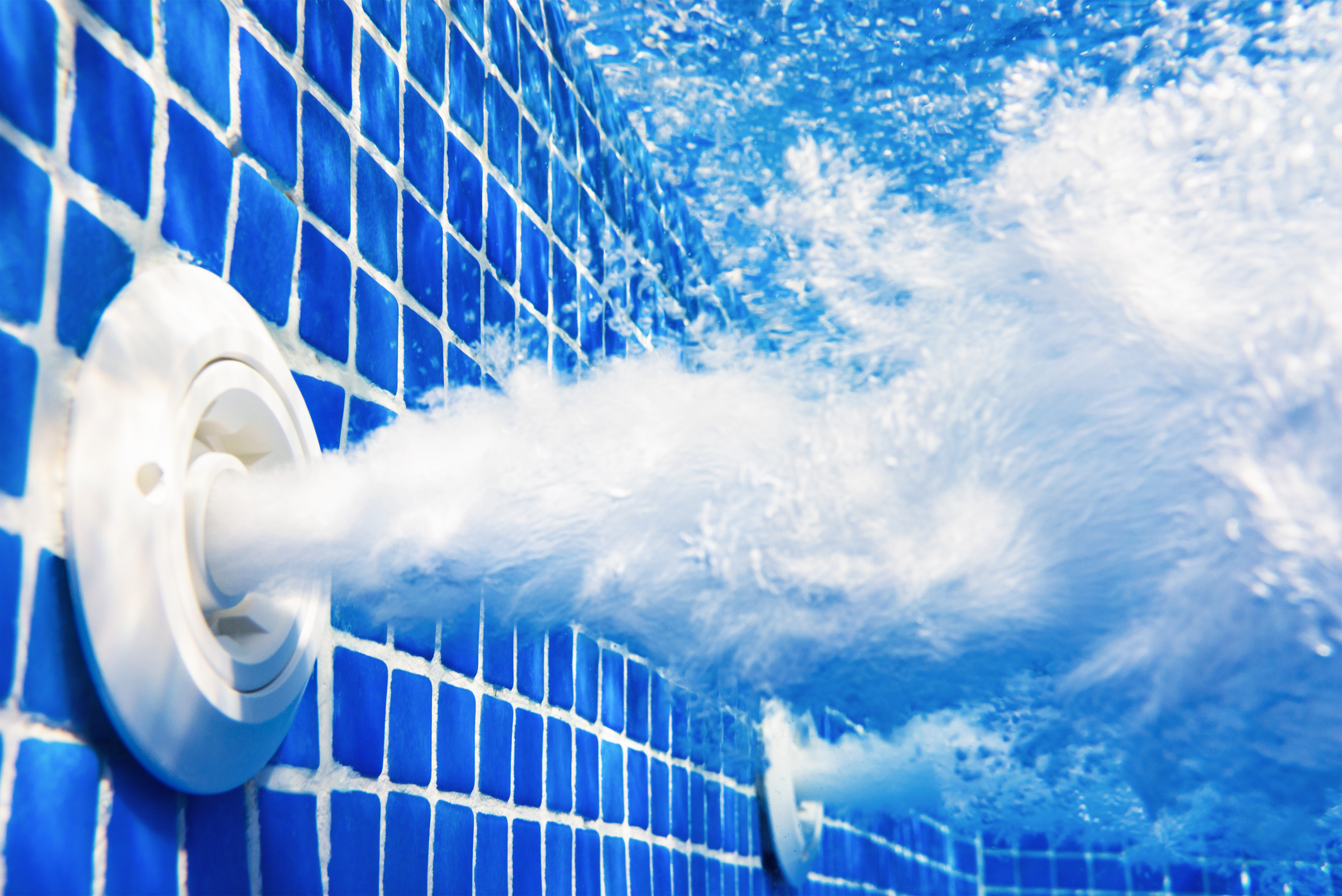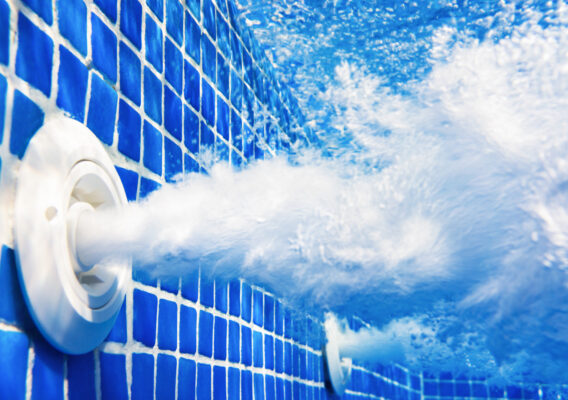Table of Contents
- 1 Ultimate Guide to Swimming Pool Pumps: Types, Maintenance, and Expert Advice
- 2 The Essential Role of Swimming Pool Pumps
- 3 Understanding Swimming Pool Pumps
- 4 Types of Swimming Pool Pumps
- 5 Swimming Pool Pump Top Brands
- 6 Choosing, Installing, and Operating an Efficient Swimming Pool Pump
- 7 Operating Swimming Pool Pumps
- 8 Troubleshooting Common Pool Pump Issues
- 9 Importance of Priming Your Pool Pump
- 10 Frequently Asked Questions about Swimming Pool Pumps
- 11 The Swimming Pool Store for All Your Pool Products and Services
Ultimate Guide to Swimming Pool Pumps: Types, Maintenance, and Expert Advice
Swimming pool pumps are more than just another pool component; they are the heart of your pool that keeps the water fresh, clean, and inviting.
The Essential Role of Swimming Pool Pumps
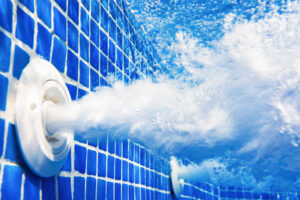
Much like the human heart circulates blood to sustain life, a pool pump circulates water through the filtration system, ensuring it remains free of contaminants and algae. This circulation process is crucial for maintaining the chemical balance of the pool and for heating the water evenly, making it comfortable and safe for swimmers of all ages.
At The Swimming Pool Store (TSPS), we understand the pivotal role that a high-quality swimming pool pump plays in the health and enjoyment of your pool. With over 50 years of dedicated service in the swimming pool industry, TSPS has established itself as a trusted name in pool care and equipment. Our expertise in managing every aspect of pool maintenance and our commitment to quality ensures that our customers receive the best products and advice.
Whether you’re looking to install a new pool or upgrade an existing system, our extensive experience and tailored approach help us cater to your unique pool needs. Dive into this comprehensive guide to learn more about how to select, operate, and maintain the right pump for your swimming pool, and discover why TSPS is the go-to source for pool owners in Connecticut seeking reliability and performance.
Understanding Swimming Pool Pumps
What is a Swimming Pool Pump?
A swimming pool pump serves as the core piece of machinery necessary for maintaining a functional pool environment. It operates continuously to drive water through various cleaning and heating systems.

The Critical Role of the Pool Pump
The importance of a swimming pool pump is paramount. It ensures the clarity and sanitation of the pool water by preventing stagnation and facilitating the even distribution of cleaning chemicals. This process is essential for minimizing the growth of algae and bacteria, making the pool a safe and pleasant environment for users.
Why Your Pool Needs a Reliable Pump
Without an effective swimming pool pump, a pool can become a breeding ground for bacteria and algae, leading to murky water and potentially unhealthy conditions. The pump’s role in circulating water aids in the uniform dispersal of chemical treatments, protecting swimmers from irritation and other health risks associated with uneven chemical levels.
The Importance of Choosing the Right Pump
Investing in a high-quality swimming pool pump is crucial for the health and longevity of your pool. Proper pump selection and maintenance can transform the pool care experience, reducing costs and labor associated with pool upkeep. At The Swimming Pool Store, we provide expert guidance on choosing and operating the right pump to ensure your pool remains a clean, inviting retreat.
Types of Swimming Pool Pumps
Swimming pool pumps come in various designs, each suited to different needs and preferences. Understanding the features and benefits of single-speed, dual-speed, and variable-speed pumps will help you choose the best option for your pool’s requirements.
Single-Speed Pumps
Definition and Features:
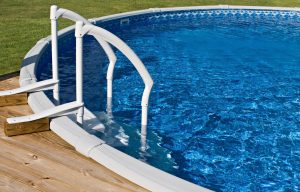 Single-speed pumps operate at a constant high speed and are known for their simplicity and reliability. They are the traditional choice for many pool owners due to their straightforward operation.
Single-speed pumps operate at a constant high speed and are known for their simplicity and reliability. They are the traditional choice for many pool owners due to their straightforward operation.
Benefits:
- Cost-Effective: Typically the least expensive type of pool pump to purchase.
- Simplicity: Easy to operate with no need to adjust speed settings.
- Durability: Fewer moving parts mean these pumps are often very durable and long-lasting.
However, the main drawback is their lack of efficiency compared to more modern pumps, as they operate only at high speed, leading to higher operational costs.
Dual-Speed Pumps
Definition and Features
Dual-speed pumps offer a high and low-speed setting, allowing for more flexibility compared to single-speed models. The high speed can be used for tasks like vacuuming the pool or when additional water turnover is needed, while the low speed is sufficient for regular filtration.
Benefits:
- Energy Efficiency: Lower speed means reduced energy consumption during regular use.
- Versatility: High-speed settings are available for intensive cleaning.
- Cost Management: Less expensive than variable-speed pumps but more efficient than single-speed.
The main limitation is that while they offer some energy savings, they are not as efficient as variable-speed pumps in reducing energy costs over time.
Variable-Speed Pumps
Definition and Features:
Variable-speed pumps use a permanent magnet motor (similar to those used in electric cars) and can be programmed to operate at a range of speeds according to the specific needs of the pool. This type provides the highest level of control and efficiency.
Benefits:
- Maximum Energy Efficiency: These pumps can be adjusted to run at the most efficient speed for any task, significantly reducing energy costs.
- Quiet Operation: They operate more quietly than other types of pumps, especially at lower speeds.
- Long-Term Savings: Despite a higher initial cost, the savings in operational costs can be substantial over the pump’s lifespan.
- Precision Control: Allows for precise control over flow rates, enhancing the effectiveness of pool chemicals and reducing wear and tear on the pool’s filtration system.
Variable-speed pumps represent the pinnacle of swimming pool pump technology, offering unmatched efficiency and control for discerning pool owners.
Each type of swimming pool pump offers distinct advantages, and the choice depends largely on your specific pool needs and budget considerations. Understanding these options ensures that you maintain optimal pool health and hygiene while managing costs effectively. The Swimming Pool Store offers a range of pumps from trusted brands like Hayward, Pentair, and Jandy, helping you make the best choice for your swimming environment.
Swimming Pool Pump Top Brands
When selecting a swimming pool pump, choosing a reliable brand that stands behind the quality of its products is crucial. The Swimming Pool Store proudly offers top-tier pumps from industry-leading manufacturers: Hayward, Pentair, and Jandy. Each brand brings unique features and benefits to cater to various pool needs. Here’s a detailed look at each brand and a comparative analysis to aid in your decision-making process.
Hayward Swimming Pool Pumps
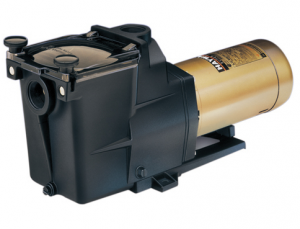 Features and Benefits:
Features and Benefits:
- Energy Efficiency: Hayward pumps are designed with energy savings in mind, featuring models that are among the most energy-efficient on the market.
- Durability: Built to last, Hayward pumps are constructed with corrosion-resistant materials for enhanced longevity.
- Innovative Technology: Many Hayward pumps incorporate advanced technology like variable-speed motors that adjust to pool demands for further energy savings and reduced noise.
The Swimming Pool Store offers Hayward Pumps and assistance in choosing the right pump type for your pool.
Pentair Swimming Pool Pumps
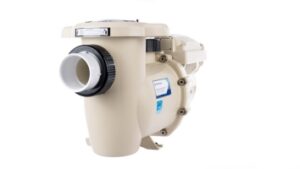 Features and Benefits:
Features and Benefits:
- Versatility: Pentair offers a wide range of pump models suitable for various pool sizes and types, ensuring there’s an ideal match for every pool.
- High Performance: Known for their robust performance, Pentair pumps efficiently circulate water, helping to keep pools sparkling clean.
- Smart Operation: Select models come with intelligent features that allow for programmable speeds and diagnostics for optimal performance settings.
The Swimming Pool Store offers Pentair pumps and assistance in choosing the right pump type for your pool.
Jandy Swimming Pool Pumps
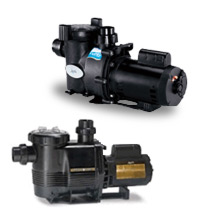 Features and Benefits:
Features and Benefits:
- Quiet Operation: Jandy pumps are engineered for ultra-quiet performance, making them a great choice for pool pumps located near windows and doors.
- Energy-saving: With a focus on sustainability, Jandy offers pumps that significantly reduce energy use and operational costs.
- User-friendly Interface: Pumps from Jandy are equipped with easy-to-use interfaces, making pool maintenance straightforward and hassle-free.
The Swimming Pool Store offers Jandy pool pumps and assistance in choosing the right pump type for your pool.
Comparative Analysis
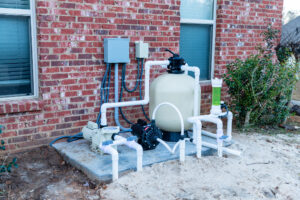
Choosing the Best Option:
- For Energy Savings: If energy efficiency is your top priority, Hayward and Jandy offer some of the most innovative solutions in variable-speed technology.
- For Performance and Versatility: Pentair stands out with its wide array of models designed for high performance in various pool settings.
- For Quiet Operation and Ease of Use: Jandy pumps are ideal for a quiet environment and user-friendly operation.
Each of these brands offers distinct advantages, making them leaders in the swimming pool pump market. Your choice will depend on your specific pool requirements, such as size, type, and personal preferences for energy efficiency and operational noise. At The Swimming Pool Store, we help you navigate these options, ensuring you find the perfect pump to maintain a healthy and enjoyable swimming pool environment.
Choosing, Installing, and Operating an Efficient Swimming Pool Pump
Selecting the right swimming pool pump is crucial not only for maintaining clear and clean water but also for ensuring energy efficiency and reducing long-term costs. This comprehensive guide provided by Energy.gov can be extremely beneficial to help pool owners choose the best type of pool pump. The guide outlines key considerations and steps for choosing, installing, and operating an efficient swimming pool pump.
Choosing the Right Pool Pump
- Assess Pump Size and Flow Rate: The size of the pump should match the size and volume of your pool. A pump that’s too large will consume more energy than necessary, while one that’s too small won’t adequately filter your pool, leading to unclean water and potential maintenance issues.
- Opt for Variable Speed Models: Energy.gov recommends variable-speed pumps as they are significantly more energy-efficient than single or dual-speed pumps. Variable-speed models can adjust their output to the exact requirements of the pool, reducing energy use and costs.
Installing the Pool Pump
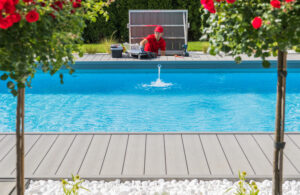
- Professional Installation Recommended: To ensure optimal efficiency and safety, it is advisable to have your pool pump installed by a qualified professional. Proper installation impacts the pump’s efficiency and longevity.
- Correct Piping Size: Using the correct size of pipes for your pump can reduce resistance and energy consumption, as noted by Energy.gov. Ensuring that your piping is not too narrow is essential for maintaining good flow and reducing strain on the pump.
Operating Your Pool Pump Efficiently
- Manage Pump Timing: Running your pump only during off-peak hours can lead to significant energy savings. Most pools require 6-8 hours of pumping per day, but this can vary based on pool size and usage.
- Regular Maintenance: Regular maintenance, such as cleaning out the pump basket and ensuring the filter is functioning properly, can prevent the pump from working harder than necessary, which in turn saves energy.
By following the guidelines from Energy.gov, considering the specific needs of your pool, and speaking with the pool professionals at The Swimming Pool Store, you can ensure that you choose a pump that offers both performance and energy efficiency. Our pool technicians are ready to assist you in selecting the best pump from top brands like Hayward, Pentair, and Jandy, tailored to your pool’s specific requirements.
Operating Swimming Pool Pumps
Proper operation and maintenance are essential to maximize the efficiency and longevity of your swimming pool pump. Below are basic guidelines on operating different types of pumps, tips for routine maintenance, and troubleshooting common issues.
Basic Operation Guidelines
Step-by-Step Guide to Operating Different Types of Pumps:
- Single-Speed Pumps: Simply turn the pump on or off. Single-speed pumps run at a constant high speed.
- Dual-Speed Pumps: Select between low and high-speed settings depending on the need. Use high speed for vacuuming or after adding chemicals, and low speed for everyday filtration.
- Variable-Speed Pumps: Program your desired speed settings based on your pool’s size, usage, and specific tasks (cleaning, heating, circulating). Many variable-speed models can be set to change speeds automatically according to programmed schedules.
Pool Pump Maintenance Tips
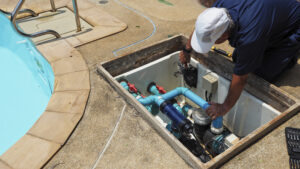
Routine Maintenance Procedures to Keep Pumps Running Efficiently:
- Check Pump Basket Weekly: Ensure that the pump basket is free of debris such as leaves, twigs, and insects, which can obstruct water flow and strain the motor.
- Inspect Seals and O-rings Regularly: Look for signs of wear or leaks and replace any compromised seals to prevent air and water leaks.
- Monitor Pressure Gauges: A sudden change in the pressure gauge reading can indicate a blockage or a malfunctioning filter. Regular checks help maintain optimal performance.
- Backwash Filters: Periodically backwash sand or DE filters to keep them functioning efficiently.
- Winterize the Pump: If applicable, follow winterizing procedures to protect the pump during the off-season.
Troubleshooting Common Pool Pump Issues
How to Identify and Solve Common Pump Problems:
- Pump Not Priming: Check for clogs in the intake line, ensure the basket is clean, and verify that all valves are open. Ensure the cover’s gasket is not worn out to prevent air leaks. *Always turn the pump off before performing pump maintenance.
- Excessive Noise or Vibration: This could be due to a worn bearing or an obstruction inside the pump. Inspect for debris and consult a professional for bearing replacement.
- Low Water Flow: Check for clogged filters or blocked intake lines. Adjust valve settings to ensure proper water flow through the pump.
- Pump Overheating: Ensure adequate ventilation around the pump and check for any blockages in the system. Overheating can also occur from running a pump too long at a high speed, particularly in single-speed models.
Properly operating and maintaining your swimming pool pump is crucial for keeping your pool clean, efficient, and safe. Regularly follow these guidelines to ensure your pump operates at peak efficiency, providing lasting service and clean, clear pool water. Should you encounter any persistent issues, consider consulting a professional from The Swimming Pool Store for expert advice and service.
Importance of Priming Your Pool Pump
Priming your swimming pool pump is a critical step in maintaining its efficiency and longevity. This section explains what priming is, why it’s necessary, and provides a step-by-step guide to the priming process.
What is Priming and Why It’s Necessary
Definition of Priming:
Priming a pool pump involves filling the pump and intake line with water to remove any air before the pump starts. This process ensures that the pump is ready to move water effectively once it begins operating.
Benefits of Priming:
- Prevents Dry Running: Priming helps avoid running the pump dry, which can cause overheating and damage to the pump’s components.
- Enhances Efficiency: A primed pump operates more efficiently, maintaining optimal water flow and pressure.
- Increases Longevity: Regular priming reduces wear and tear on the pump, extending its lifespan.
Frequently Asked Questions about Swimming Pool Pumps
Q) How do you prime a swimming pool pump?
A) Step-by-step instructions on priming your pool pump:
- Turn Off the Pump:
Ensure the pump is turned off before starting the priming process to avoid any potential damage.
- Close the Drain Plugs:
Close all drain plugs on the pump. If your pump has a priming port, open it and fill the pump with water.
- Fill the Pump Basket:
Remove the pump lid and fill the pump basket with water. This helps create a suction force that draws water into the pump and the intake line.
- Check and Release Air:
Secure the pump lid back on tightly to ensure no air leaks. Some pumps have an air release valve that allows you to bleed out any trapped air in the system.
- Open the Valves:
Open the intake line valve to allow water to flow from the pool to the pump. Ensure that the return line is also open so that water can flow back into the pool.
- Turn On the Pump:
Turn on the pump and observe the water flow through the pump’s clear lid (if applicable). The pump should start pulling water through the system within a few minutes.
- Check for Proper Flow:
Monitor the water flow and pressure gauge. If the pump is not pulling water or if there are air bubbles visible, there may still be air trapped in the system. Repeat the air release step if necessary.
- Monitor and Adjust:
Once the pump is running smoothly with a steady flow of water, check for leaks and ensure all connections are secure. Adjust the valves as needed for optimal operation.
Priming your swimming pool pump is essential for its effective operation and should be part of your regular pool maintenance routine, especially at the start of the season or after any maintenance work that involves draining the pump or pipes. Following these steps will help ensure that your swimming pool pump operates efficiently and lasts for many years. For more detailed guidance and assistance, don’t hesitate to contact the experts at The Swimming Pool Store.
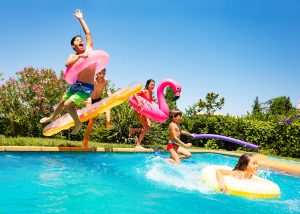
Q) Do you run pool pump while swimming?
A) Yes, you can run the pool pump while swimming. Running the pump helps circulate the water and distribute pool chemicals evenly, which keeps the pool clean and safe during use.
Q) How to replace a swimming pool pump motor?
A) To replace a swimming pool pump motor, first turn off the electrical power to the pump. Disconnect the pump motor from the plumbing and electrical connections. Remove the old motor, replace it with the new one, and reconnect everything. Ensure all connections are tight and secure before turning the power back on. *Professional installation is recommended.
Q) How long to run swimming pool pump?

A) The duration to run a swimming pool pump varies depending on the pool size and pump type. Generally, it is recommended to run the pump for about 8-12 hours per day to ensure the water is adequately filtered and chemicals are well distributed.
Q) How much electricity does a swimming pool pump use?
A) The amount of electricity a swimming pool pump uses depends on the pump’s size and efficiency. On average, a typical residential pool pump can use between 500 and 2,000 watts of power. Opting for an energy-efficient, variable-speed pump can significantly reduce electricity use.
Q) What does a swimming pool pump do?
A) A swimming pool pump circulates water through the pool’s filtration system, keeping the water clean and free of debris. It helps distribute chemicals evenly, maintains the water’s clarity, and prevents algae and bacteria growth by ensuring continuous water movement.
These FAQs cover basic operational and maintenance queries regarding swimming pool pumps, ensuring you have the knowledge needed to manage your pool effectively. For more detailed information and support, contact The Swimming Pool Store.
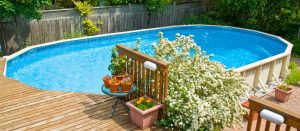 Q) What kind of pump is better for above ground pools?
Q) What kind of pump is better for above ground pools?
A) For above-ground pools, a 1.5 HP pump is typically sufficient. Larger pumps might seem like a better choice, but they can actually lead to increased energy consumption and higher operating costs without providing additional benefits. For swimming pool pumps, higher horsepower means a higher electric bill. Opting for the right-sized pump ensures efficient performance and cost-effective operation.
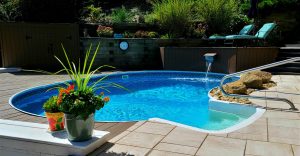
Q) What pool pump do I need for my inground pool?
A) Inground pools usually need self-priming pumps because the equipment is positioned above the waterline. On the other hand, above-ground pools can utilize non-self-priming pumps, leveraging gravity to draw water from the pool.
The flow rates for pumps vary between pool types. Inground pool pumps typically handle about 75-150 gallons per minute, while pumps for above-ground pools manage flow rates ranging from 30-60 gallons per minute.
Learn more about the possibilities of incorporating Swimming Pool Automation Systems, from pool robots to automated pool pumps, filters, lighting, and pool heating systems.
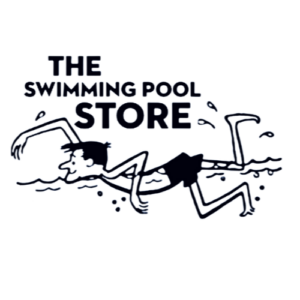 The Swimming Pool Store for All Your Pool Products and Services
The Swimming Pool Store for All Your Pool Products and Services
Selecting the right swimming pool pump and ensuring it is properly maintained are essential steps in keeping your pool in optimal condition. An efficient pump serves as the heart of your swimming pool, maintaining water clarity, ensuring chemical balance, and enhancing the overall enjoyment of your swimming pool. At The Swimming Pool Store (TSPS), we recognize the critical role that a reliable pump plays in the health and longevity of your pool.
TSPS boasts a long-standing reputation for quality and commitment to customer satisfaction. Our dedicated team of pool technicians is well-versed in all aspects of pool care, from installation and maintenance to troubleshooting and upgrades. We take pride in our ability to offer personalized advice tailored to each customer’s unique needs, ensuring that every pool owner receives the best possible service and product recommendations.
The Swimming Pool Store offers high-quality swimming pool pumps from top brands, backed by over 50 years of expert service and customer satisfaction. Our team is ready to provide you with personalized advice and support to ensure your pool operates at its best. Contact us today to find the perfect solution for your needs and explore our range of swimming pool pumps.
